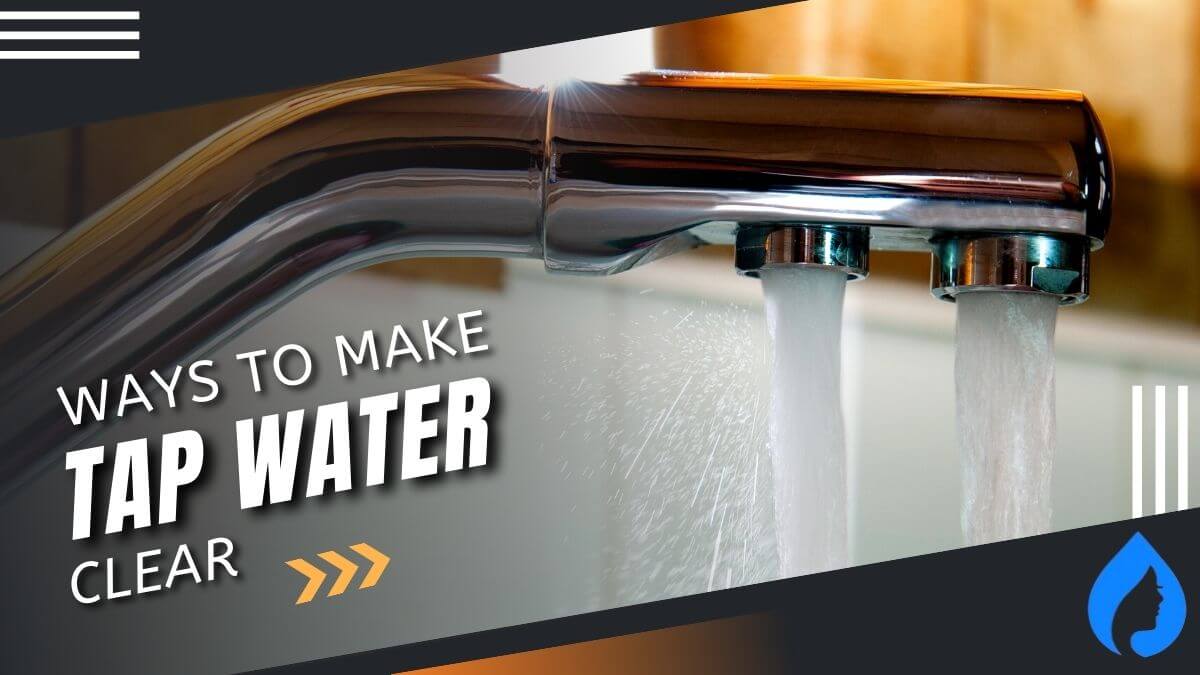
Turned on your tap and saw water milky? Worrying, how to fix cloudy tap water?
Cloudy or milky white water happens for reasons like the formation of air bubbles in water, the hardness of water, and water contamination from the main source of the water distribution system.
Here’s how to fix the cloudy appearance of water:
Allow the tap water to sit for some time to eliminate the air bubbles. If the cloudy water is still coming from only one of your taps, clean the aerator with a 50:50 solution of vinegar and water.
Continue reading to know the complete solution to cloudy tap water in the simplest way possible. Here we go!
How to Fix Cloudy Sink Water in 7 Simple Ways
I am sharing the smartest cheat sheet for troubleshooting cloudy water:
| Method | Effectiveness | Implementation | Time | Cost |
|---|---|---|---|---|
| Clean your aerator (or replace it) | Effective | Moderately easy | 1 hour (approx) | $3 to $8 (approx) |
| Insulate your pipes | Effective | Easy | 3 hours (approx) | $10 to $15 (approx) |
| Check your water heater | Effective | Moderately easy | 20 – 60 mins (Depending on the tank’s size) | $80 to $100 (depending on the plumber and the area in which you’re residing) |
| Use a water softener (under-sink or whole house) | Very effective | Moderately easy | 2-3 hours (approx) | Over $2000 (installation cost included) |
| Use a sediment filter | Very effective | Moderately easy | 2-3 hours (approx) | $35 to $100 (approx) |
| Run your house’s faucet for only a few minutes and then fill the water in a glass | Effective | Very easy | A few minutes | Zero cost (just a minor wastage of water) |
| Contact local authorities | Effective | Moderately easy | Depends on the authorities’ response and action | No capital is taken from the common people. |
Also Read: How To Remove Chalky Residue From Water
Clean Your Aerator (Or Replace)
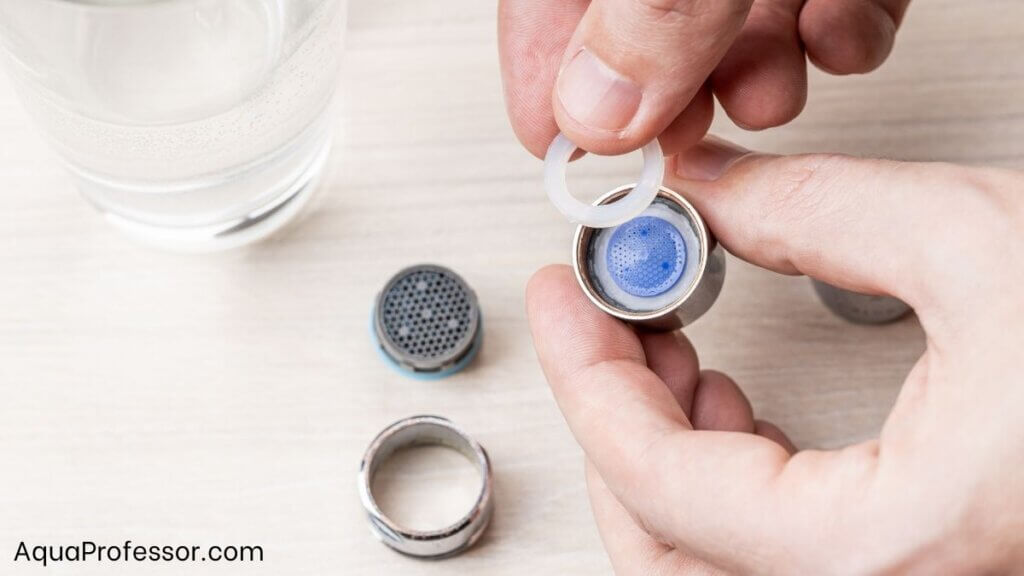
Sometimes, your faucet’s dirt-trapped aerator makes your water cloudy. Cleaning or replacing the aerator is the way to get rid of it.
Here Are The Steps To Clean The Aerator:
If the problem isn’t solved, you need to replace the aerator.
Is The Process Effective?
Yes, the process is effective.
How Easy Is It To Implement?
The process is moderately easy to implement.
How Much Time Does It Need?
The process takes approximately 1 hour to complete.
What Is The Cost Involved In The Process?
The process costs anywhere between $3 to $8 (approx).
Also Read: 5 Best Faucet Finishes
Insulate Your Pipes
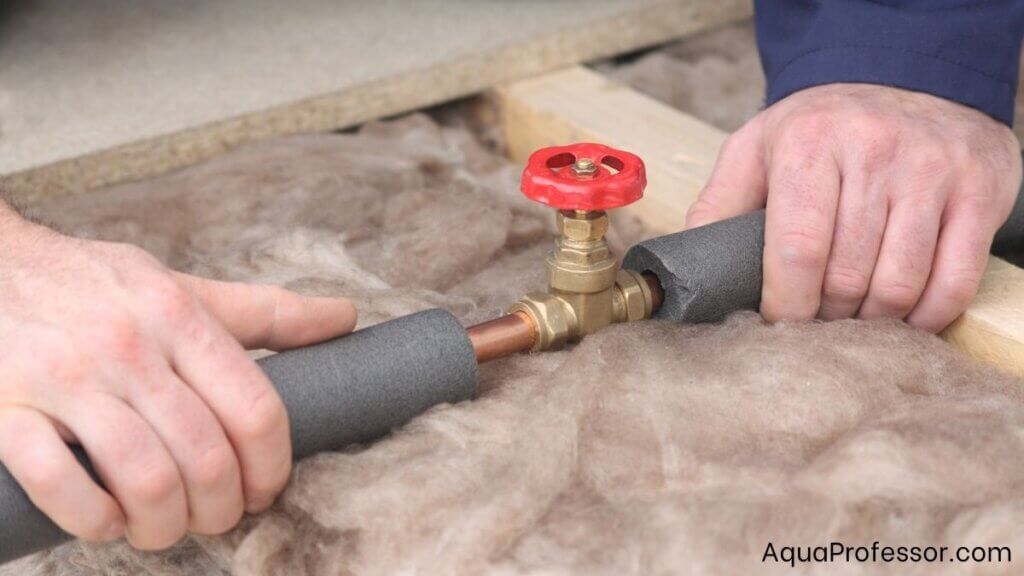
Insulating your water pipes is the ultimate solution if your tap’s cloudy water results from temperature swings. As the cold water inside your pipes gets warmer, air bubbles form inside them. Insulate your pipes by taping some pipe sleeves/ fiberglass insulation to prevent the same.
Is The Process Effective?
Yes, the process is effective.
How Easy Is It To Implement?
The process is easy to implement.
How Much Time Does It Need?
In the case of the insulation of pipes in a small house, the process would take approximately 3 hours to complete.
What Is The Cost Involved In The Process?
The process would cost anywhere from $10 to $15 (approx).
Also Read: Can You Drink Shower Water?
Check Your Water Heater
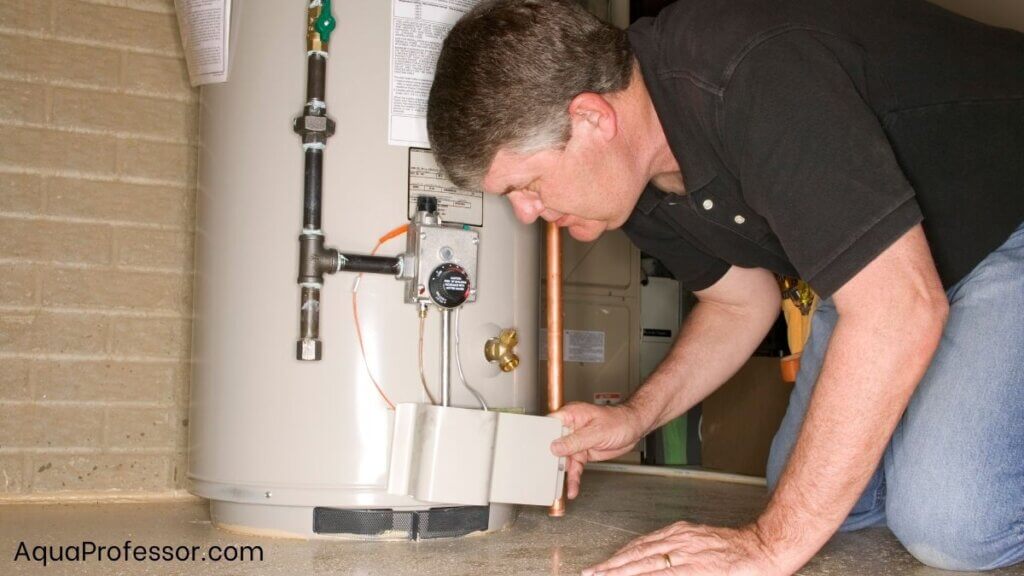
Occasionally, sediment deposits in the water heater may make the warm water of the heater cloudy. Flushing the heater one or two times might clear up those sediments of your heater. But I’ll recommend a plumber to start this process.
Is The Process Effective?
Yes, the process is effective.
How Easy Is It To Implement?
The process is moderately easy to implement. This is because you have to employ a plumber to get this work done.
How Much Time Does It Need?
The process would take approximately 20 to 60 mins, depending on the tank’s size.
What Is The Cost Involved In The Process?
The process would cost anywhere between $80 to $100 (approx), depending on the plumber’s cost and the area you live in.
Use A Water Softener (Under-Sink Water Softener Or Full-House Water Softening Unit)
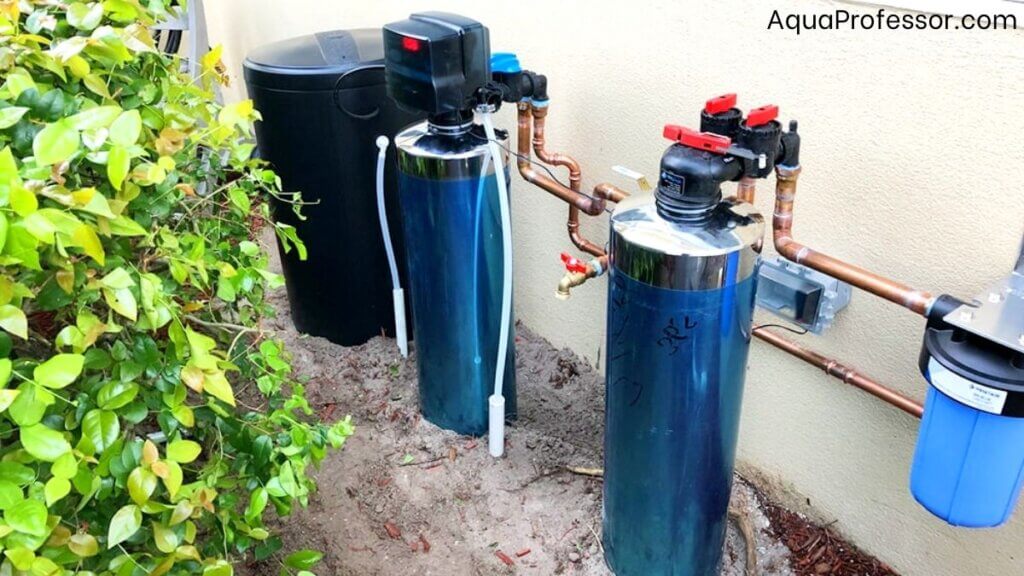
Hard water looks cloudy, thanks to dissolved minerals. The remedy is to test the hardness of water from the cold water tap and install a water softening system under your sink or the entire house. The water softener contains resin beads that catch and exchange calcium and magnesium ions for sodium and potassium ions.
When filled with calcium and magnesium, the resin beads are then washed with an extremely potent salt or a solution of potassium. The arising chloride solution, in the form of a waste stream, gets released into the environment after draining.
Is The Process Effective?
Yes, the process is very effective.
How Easy Is It To Implement?
The process is moderately easy to implement as you have to involve a plumber in work.
How Much Time Does It Need?
The installation process requires approximately 2 to 3 hours for its completion.
What Is The Cost Involved In The Process?
The process would cost approximately over $2000 (installation cost included).
Also Read: Why Is My Well Water So Cloudy?
Use A Sediment Filter
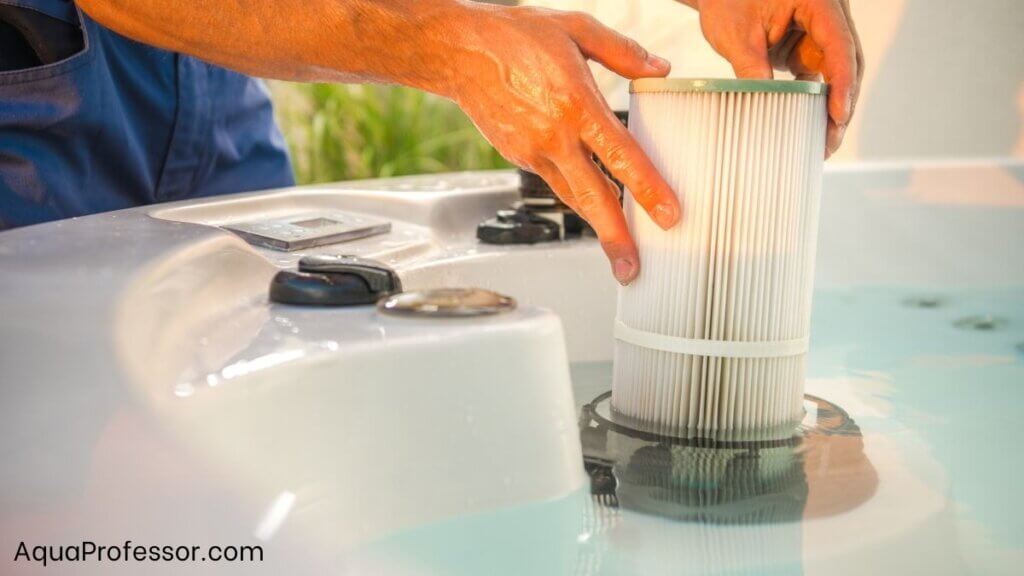
If you suspect sediments behind cloudy water in your home, it is good to install a sediment filter. It certainly improves water quality. However, the sediment filter doesn’t work if hot cloudy water comes out of the water tap because of the mineral build-up within your water heater. If such a situation arises, you need to call your plumber.
Is The Process Effective?
Yes, the process is very effective.
How Easy Is It To Implement?
The process is moderately easy to implement because a plumber is needed to solve the problem.
How Much Time Does It Need?
The process of installation would take approximately 2 to 3 hours to complete.
What Is The Cost Involved In The Process?
The process would cost $35 to $100 (approx).
Run Your Faucet For A Few Minutes
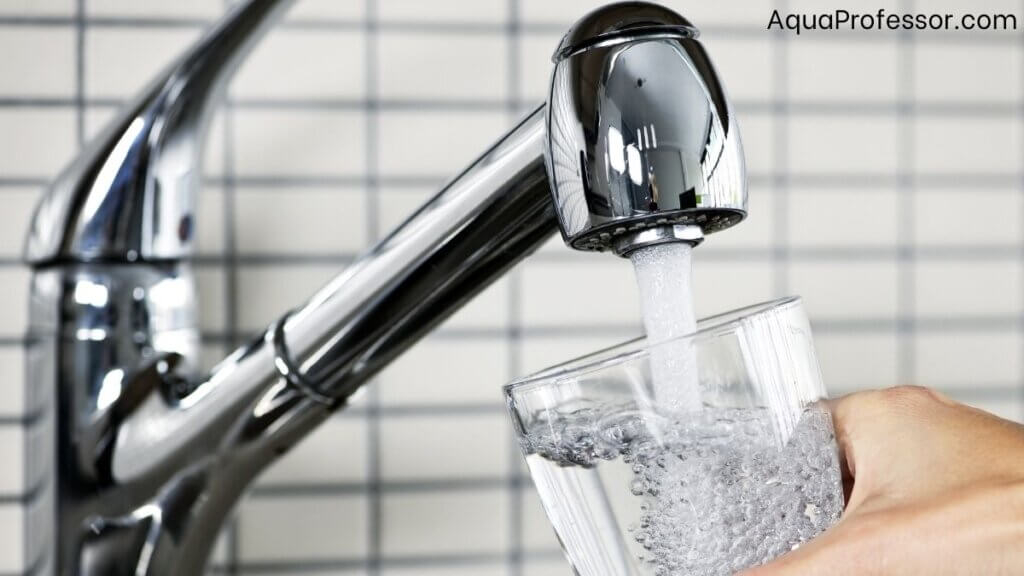
The problem of cloudy faucet water you are experiencing might not always be complex. Simple things like running the faucet for a few minutes might work. It helps the air bubbles within the pipes to disappear, thus fading the strange color of water, giving way to clean water fit for drinking.
Now, take a glass of water. Hold the transparent glass with water, focus on it for some time and ensure the clearance of the water’s milky appearance.
Is The Process Effective?
Yes, the process is effective.
How Easy Is It To Implement?
The process is very easy to implement.
How Much Time Does It Need?
The process will take only a few minutes.
What Is The Cost Involved In The Process?
The process involves zero cost. Only you have to bear a little wastage of water.
Contact The Local Water Supplier

Contamination in the main water supply or the water distribution system can make tap water cloudy. Only contacting the higher authority (water provider) can solve the problem in such a case.
Is The Process Effective?
Yes, the process of contacting the local water authority is effective.
How Easy Is It To Implement?
Solving the problem by contacting the municipal supply office is moderately easy.
How Much Time Does It Need?
The time required for the process depends on the authorities’ response and action.
What Is The Cost Involved In The Process?
The process requires no money from the common people. Instead, the authority will spend what is needed.
Why Is My Water Cloudy From the Tap: 5 Reasons
Tap water may turn cloudy because of many reasons. Here I have included them in the table below:
| Reason | How Common | Whether Harmful | How To Fix |
| Air bubbles | Most common | No | Open the faucet and allow the water to drain for sometime |
| Hard water | Very common | No | Install a water-softening system |
| Sediments, etc. in water (TSS) | Common | No | Install a sediment filter; call a plumber to flush out the sediments or mineral build-ups |
| Methane Gas | Not common | No (methane being a highly flammable entity, surges to the top, dissipating itself rapidly as soon as it gets into contact with air) | Methane dissipates automatically (when it comes in contact with air) |
| Chilled Weather | Most common | No | It gets fixed automatically as the weather becomes normal |
Air Bubbles
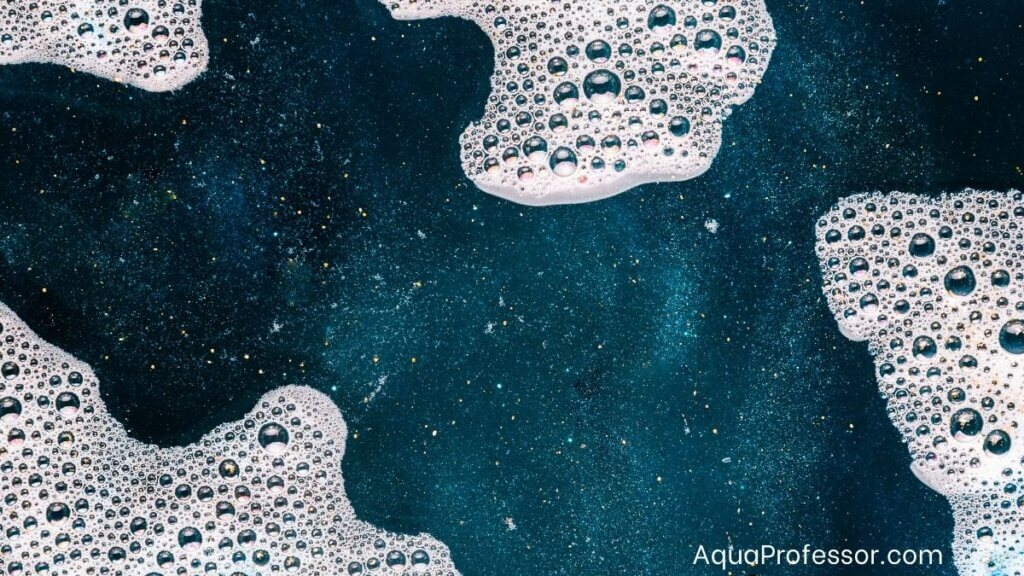
Cloudy tap water in your home commonly happens when air bubbles accumulate inside your water pipes. For example, as you open your faucet, sometimes air penetrates it and stays there because of the solubility of the air.
As the air in the water increases, it generates high water pressure, resulting in more air bubbles within the faucet, leading to the flow of cloudy water from it.
How Common Is It?
This is one of the most common phenomena.
Is It Harmful?
No, drinking this type of contaminated water is not at all harmful.
How Can We Fix It?
To fix the cloudy drinking water, open the faucet and allow the water to drain for some time.
Hard Water
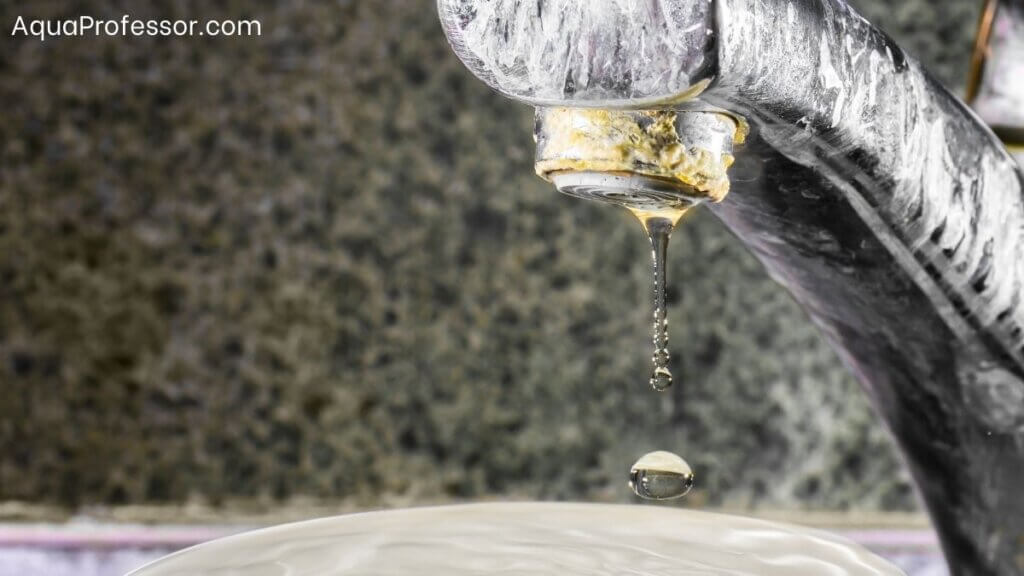
More than eighty-five percent of homes have hard water. And hard water results in the flow of cloudy water from your faucet. This cloudy water contains various minerals and hence leaves water stains on the vessels that contain water for cleaning or drinking.
How Common Is It?
This is a very common phenomenon.
Is It Harmful?
No, it’s not at all harmful.
How Can We Fix It?
To fix it, install a water-softening system.
Sediments, etc., In Water (TSS)
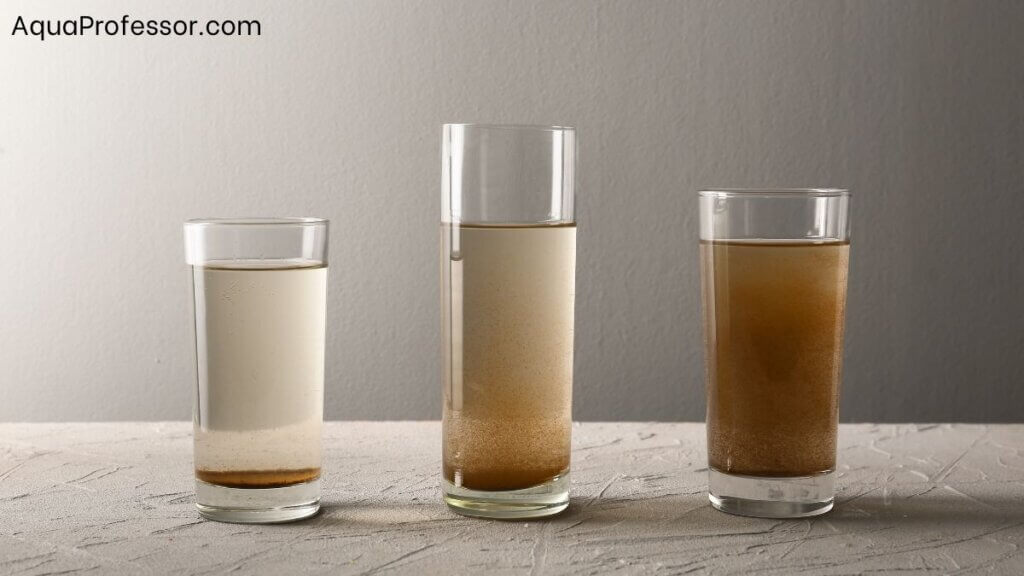
Sometimes, TSS, including sediments, is the reason for cloudy water discharge.
TSS or Total Suspended Solids are exceptionally minor solid particles in water. These particles remain suspended in water and never settle down to the water’s underside.
Therefore, whenever your water appears clear after standard filtration, it indicates that your faucet water comprises high levels of Total Suspended Solids.
Construction, drilling, or any other kind of ground disturbance close to your municipal water distribution area results in a high concentration of TSS in the faucet water of different houses in that area. TSS comprises silt, clay, manganese, sediment, iron, and algae. They turn your home’s tap water cloudy.
In case of less severe cloudiness due to TSS, a standard cartridge/ bag water filter helps. However, for the more intense cloudiness of TSS-augmented water, you have to use a multi-level water filtration system.
How Common Is It?
This is a common phenomenon.
Is It Harmful?
No, it’s not at all harmful.
How Can We Fix It?
To fix it, install a sediment filter. However, the sediment filter doesn’t work in case of any mineral build-up within your water heater. If such a thing arises, you need to call your plumber.
⛽Methane Gas
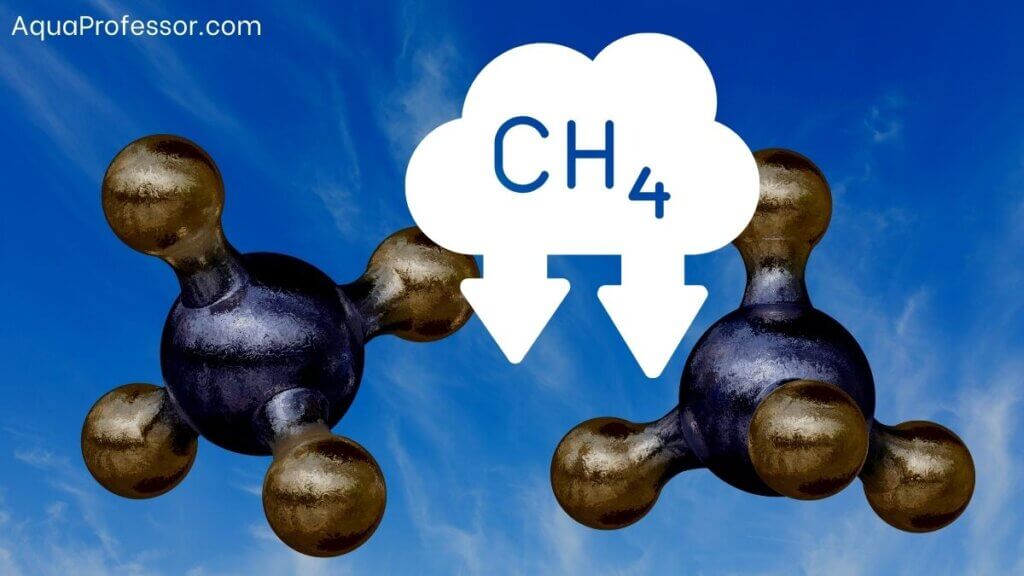
Tap water also becomes cloudy because of methane gas contamination. This usually occurs in areas where there are oil and gas mines. So if you notice white bubbled water coming out of your faucet with stammering/bubbling sounds, there’s a chance that methane is present in your water.
After testing, if you find the methane concentration in your water to be more than ten PPM (parts per million), open the ventilation near the faucet area and take immediate action to treat the methane-contaminated water in your house.
How Common Is It?
Methane contamination is an uncommon phenomenon.
Is It Harmful?
No, it’s not harmful if the methane concentration is less than ten parts per million. This is because methane, a highly ignitable entity, surges to the top, dissipating itself rapidly as soon as it comes into contact with air. However, immediate action is required in case the concentration of methane in water exceeds ten parts per million.
How Can We Fix It?
To fix it, leave the water containing methane gas in free air. Methane will dissipate within no time.
Chilled Weather
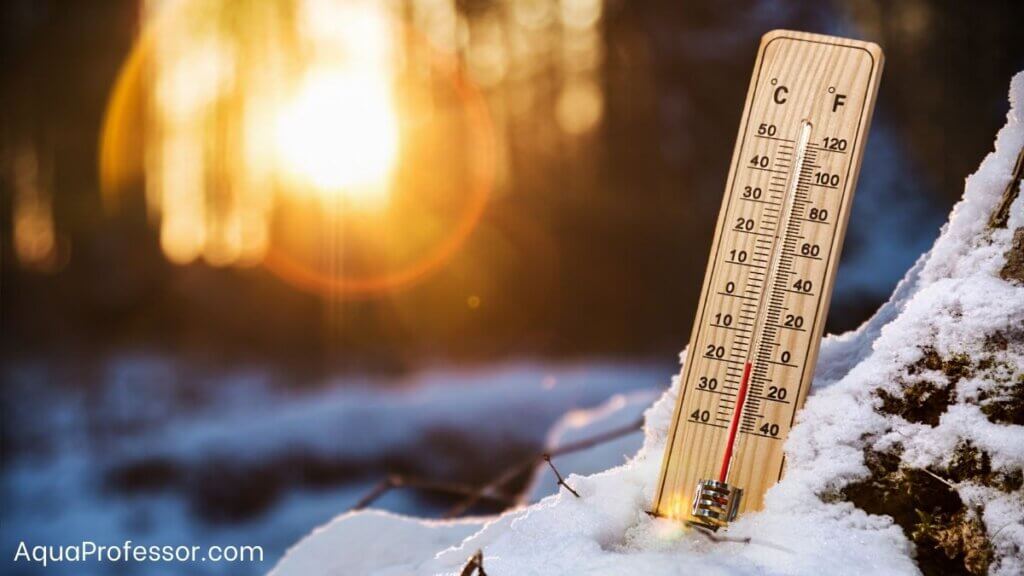
A decrease in temperature increases air solubility in water, increasing the water pressure inside the pipes. As the water comes out of the tap, the pressure suddenly drops, releasing air bubbles trapped in the water and making it cloudy.
How Common Is It?
This is one of the most common phenomena.
Is It Harmful?
No, it’s not at all harmful.
How Can We Fix It?
The problem gets automatically fixed as the temperature becomes warmer. Let the water sit in a container before you drink so the air bubbles escape naturally.
How To Fix Cloudy Tap Water: FAQs
1) Is it safe to drink cloudy tap water?
If the reason behind your cloudy water is a non-serious issue like aeration, water hardness, sediment build-up, chilled weather, etc., then you can drink cloudy water. It’s safe for drinking.
2) Can I Shower In Cloudy Water?
Yes, you can shower in cloudy water, as cloudy water is not harmful. In case it is affected by some trapped air bubbles, it will slowly clear up on its own.
3) Why Is My Water Cloudy And Then Clearing Up?
It may happen because of aeration or the trapping of air bubbles inside the pipes. Cloudiness of water due to aeration naturally clears up if the water is drained for some time.
4) Is It Normal For Hot Tap Water To Be Cloudy?
Yes, it’s perfectly normal if your hot tap water comes cloudy. It happens due to the sediments and minerals buildup within your water heater’s tank. To get rid of the cloudy water, you have to call the plumber so that he can flush the dirty water out.
5) Why Is My Cold Water Cloudy?
Cold water may become cloudy for many reasons like aeration, hardness of water, sedimentation, methane gas contamination, or chilled weather. In all these cases, water is not harmful and completely safe for drinking.
Adarsh is a Health & Nutrition Sciences graduate with expertise in environmental health. He is associated with ventures like Glacier Fresh Filter and Simpure Filter Systems. Through Aqua Professor, he intends to provide helpful information to every home to help them make smarter decisions.
